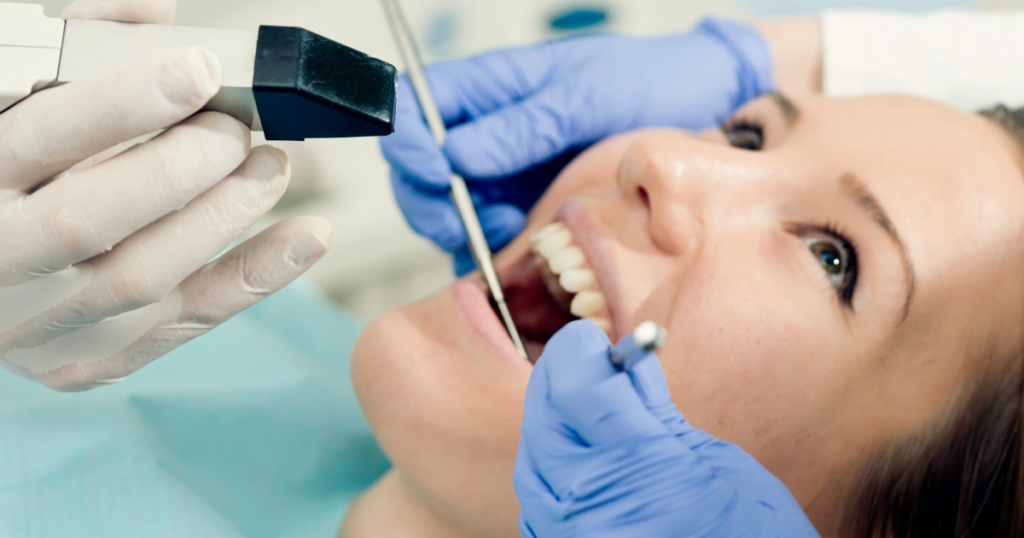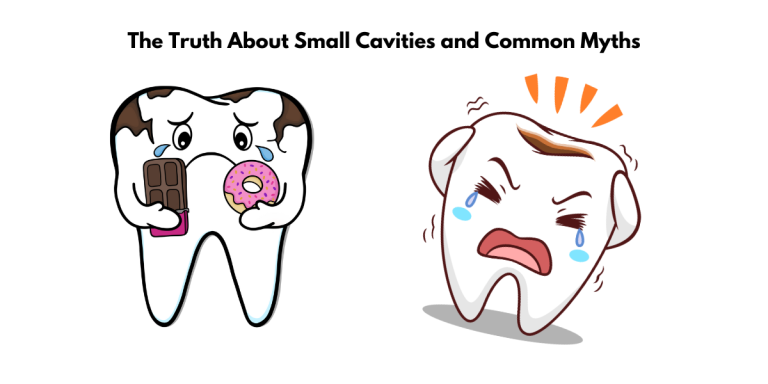Restorative Dentistry: Different Types of Procedures and Cost
What is restorative dentistry?
Restorative dentistry is a branch of dentistry that focuses on diagnosing, treating, and restoring damaged or missing teeth and other oral structures. This includes repairing cavities and installing dental implants, fillings, crowns, bridges, and dentures.
It also includes treatments from other dental specialties, such as endodontics and prosthodontics, to ensure multifaceted care.
The goal is to save and restore the teeth and mouth’s natural look, shape, and feel. General dentists can perform restorative dentistry without additional education and certification and are often covered by dental insurance.

The benefits of therapeutic dentistry procedures
If you are considering a smile makeover, many options are available. One option that is becoming increasingly popular is restorative dentistry. Restorative dentistry procedures can range from simple teeth whitening to more complex procedures such as dental implants or veneers.
There are many benefits of restorative dentistry, including the following:
Aesthetic improvement of teeth
Restorative dentistry can improve teeth’ aesthetic appearance in various ways. For instance, veneers are thin, semi-transparent porcelain shells bonded to your teeth to improve their appearance. Veneers can fix broken, chipped, discolored, crooked, or misshapen teeth.
Improved oral health
Having restorative dentistry procedures such as dental veneers, root canal treatments, and oral-b electric toothbrushes can greatly improve oral health. Preventative care such as regular check-ups with a family dentist and routine dental cleanings can help to maintain strong and healthy teeth and gums.
Reduced risk of infection
Restorative dentistry reduces infection risk by preventing further breakdown and allowing ongoing maintenance, all within a growing patient-driven demand for pain-free and cosmetic treatment.
The laser can also replace conventional instrumentation to achieve comparable or better results.
Reduced risk of tooth decay
Having restorative dentistry procedures can help reduce the risk of tooth decay by replacing missing tooth structures, filling cavities, and improving the appearance of the teeth. These procedures can help restore the tooth to its original strength and form, preventing cavities from forming and enabling patients to chew and speak better.
Practicing preventative care such as brushing, flossing, and using electric toothbrushes and water flossers can also help reduce the risk of tooth decay and help maintain a healthy smile.
Improved chewing and swallowing abilities
A restorative dentistry procedure can improve chewing and swallowing abilities by replacing or restoring teeth damaged or lost due to decay or injury. Restorative dentistry can also prevent further damage to the teeth and gums by providing restorative treatments such as fillings, crowns, bridges, and implants.
These restorations help to support the patient’s bite, which helps to improve the chewing and swallowing process.
Reduced stress and anxiety
Restorative dentistry procedures can reduce stress and anxiety by providing much-needed relief for various oral ailments. Through discussing potential treatments and payment options with a dentist, patients can make an informed decision that works best for their situation.
Knowing that they are in the hands of friendly and understanding professionals can also help patients feel confident in the outcome of their procedures.
Improved self-esteem
A restorative dentistry procedure can improve one’s self-esteem by addressing chipped, uneven, or yellowing teeth which are often sources of embarrassment and insecurity. Restoration dental can help to improve the appearance, structure, and function of teeth and can help to close gaps, reshape the smile, and even restore worn teeth.
Veneers can also improve the look of teeth that have become broken, chipped, discolored, or misshapen. Patients can finally have the smile they’ve always wanted with the right procedure. This can not only help them chew their food better and speak clearer but can also give them a boost in self-confidence.
Reduced need for dentures
Having restorative dentistry procedures, such as dental crowns, fillings, bridges, and implants, can reduce the need for full or partial dentures. These procedures can preserve natural teeth and replace missing teeth, thus eliminating the need for dentures.
By filling in empty spaces in the mouth, restorative dentistry can help prevent cavities in the remaining teeth because odd-shaped gaps are vulnerable spots for plaque-causing bacteria to build up.
Cost savings compared to other treatments
Restorative dentistry can provide great relief for various oral ailments, but it often comes at a cost. Compared to other forms of treatment, restorative dentistry can be more expensive due to higher start-up costs, the need for different equipment for different applications, and additional practitioner training in the methodology.
However, despite this, many patients prefer the laser technique to conventional preparation due to its comfort factor, as it generates less heat and requires little to no local anesthesia.

Different types of restorative dentistry procedures
Many different types of dentistry procedures fall under “restorative dentistry.” This can include anything from a simple filling to a complete tooth replacement.
The type of procedure that is right for you will depend on the specific problem you are trying to correct. Here is a brief overview of some of the most common restorative dentistry procedures:
Fillings
Fillings are used in restorative dentistry to replace decayed portions of teeth that have formed cavities. Using the right filling material, such as amalgam, porcelain, gold, silver, or another material, and having them installed by a dentist can last several years and provide the desired appearance and functionality of an intact tooth.
Crowns
A crown dental restoration is a type of dental procedures in which a tooth-shaped cap is placed over a damaged, decayed, or cracked tooth to restore its proper size, shape, aesthetic, and strength. Crowns can be made from various materials, such as metals, ceramics, stainless steel, porcelain, and composite resin. Crowns are one of the longest-lasting cosmetic procedures and are an alternative to veneers.
Root canals
A root canal is a dental work used to clean out decay from the root of a damaged tooth, eliminating painful toothaches and restoring oral health.
The procedure involves removing all damaged material, replacing it with a sterile material, and then protecting the tooth with a porcelain crown. This differs from other types of restorative dentistry procedures, such as fillings, veneers, crowns, bridges, and dental implants, which are used to restore the appearance and strength of the damaged tooth or replace missing teeth.
Teeth whitening
Teeth whitening is a cosmetic dentistry procedure that removes discoloration or stains from natural tooth enamel, resulting in a whiter smile. It uses chemicals to bleach the teeth and is usually done in the dental chair, at home, or with a combination.
Implants
Implants are a form of restorative dentistry used to replace missing teeth. The procedure involves fusing titanium posts to the jawbone and securing an artificial tooth onto the post. Implants are considered the closest thing to natural teeth because the titanium posts act as tooth roots, stimulating bone growth and providing stability to the artificial tooth.
Frenectomies
A frenectomy is a specialized restorative dentistry procedure involving removing the frenulum, a band of tissues that attaches the upper or lower lip to the gums. The procedure is similar to other restorative dentistry treatments, such as crowns, bridges, fillings, and veneers, in that it is used to restore your smile.
Porcelain veneers
Porcelain veneers are a type of restorative dentistry procedure that can be used to improve the appearance of one’s teeth. Veneers consist of thin, semi-transparent porcelain shells bonded to the front of the teeth. By covering the front of the tooth, veneers can change the shape and color of the tooth, providing a more permanent solution than whitening or bonding.
Tooth decay treatment
The tooth decay treatment is called restorative dentistry; It involves the dentist removing decay from the tooth and filling it up with various materials, such as porcelain, silver, gold, or other restorative materials. The dentist may use a dental crown if the tooth is too weak to hold the dental filling.
Laser dentistry
Laser dentistry is a type of restorative dentistry that uses laser energy to precisely interact with the various target chromophores in the dental tissues to ablate or modify structure. This allows for treating various dental diseases and conditions, such as dental caries, cavities, and hard and soft tissue abnormalities.
Amalgam restorations
The function of amalgam restorations in restorative dentistry is to fill cavities in teeth with a silver-colored alloy. This material has been used for decades and is still in use today due to its strong and durable properties. It is composed of a mixture of metals, including silver, tin, zinc, and copper.
How to choose the right type of restorative dentistry procedure for you
If you’re considering restorative dentistry, you have a lot of options. But how do you know which procedure is right for you? Let’s go over the different types of restorative dentistry and help you decide which is best for your needs.
Step 1: Determine your needs
Several factors need to be considered when determining the right type of restorative dentistry procedure for you. First, it is important to check a dentist’s references to ensure they provide quality care.
Additionally, before and after pictures can give you an idea of what to expect regarding results. Furthermore, it is important to feel comfortable asking questions, so you and your dentist can work together to find the treatment options that best fit your needs.
Step 2: Look into different types of therapeutic dentistry procedures available
Restorative dentistry procedures provide relief for a variety of oral ailments and can help restore your smile to its optimal level of appearance and function. There are several options available for restorative dentistry, so it’s important to be fully informed before deciding.
It’s important to thoroughly discuss your options with your dentist and verify that your insurance plans cover potential procedures. This will help you avoid surprise charges due to elective rather than restorative procedures.
Step 3: Ask a dentist about your options & benefits
If you’ve been considering restorative dentistry but are unsure what procedure is right for you, it’s important to consult a dentist.
During your consultation, your dentist can assess your individual needs and recommend the best treatment. They will also be able to advise you on the benefits and risks associated with each type of procedure.
Step 4: Read reviews and feedback from other patients
Reading reviews and feedback from other patients can help you choose the right type of restorative dentistry procedure for you by providing valuable insight into the quality of care that a particular dentist provides. It can also give you an idea of what kind of results you can expect from the procedure.
Step 5: Consider the budget and timing of payment options
Budget and timing are two important factors to consider when considering a type of restorative dentistry procedure. Financing options like CareCredit may be available to help make the cost of treatment more manageable.
Step 6: Consider ethnicity requirements
Many different therapeutic dentistry procedures are available, each with its benefits and drawbacks. Choosing the right procedure for your needs is important to ensure optimal results.
Step 7: Book an appointment online or get quoted instantly
The final step in choosing the right type of restorative dentistry procedure for you is to book an appointment online or get quoted instantly. This will allow you to receive a quote from the dentist and confirm the date and time of your appointment.

FAQs
Here are some of the most frequently asked questions about restorative dentistry:
When is a tooth extraction necessary?
A tooth extraction is only necessary when the tooth is too damaged to be repaired. In some cases, a tooth may need to be extracted if it is causing crowding or other problems with the alignment of your teeth.
Do dental probiotics work?
The use of dental probiotics as a way to improve overall dental health has been gaining more attention in recent years. While there is ongoing research to determine how effective probiotics are in treating dental problems, the evidence suggests that probiotics may benefit people suffering from periodontal disease or tooth decay.
What is major restorative dentistry?
Restorative dentistry is a branch of dentistry that focuses on repairing and restoring damaged or missing teeth and restoring the natural look, shape, and feel of natural teeth. This includes a variety of procedures such as repairing cavities with fillings or bonding treatment, restoring missing parts of tooth structure with indirect or direct restorations such as inlays, onlays, crowns, or fillings, and replacing missing teeth entirely with artificial restorations such as implants, dental bridge, or dentures. Restorative dentists treat patients of all ages, from children to seniors. The goal of restorative dentistry is to save teeth and restore the mouth to a functional and aesthetically pleasing state.
Can restorative dentistry be used in conjunction with other treatments?
Yes, restorative dentistry can be used in conjunction with other treatments. For example, a dentist may recommend teeth whitening before completing restorative dentistry procedures in highly visible areas of the mouth, complete or partial dentures can be used after tooth extractions, root canals (endodontics) can be used to fill a gap in your smile after a tooth is extracted, and contouring can be used alongside dental bonding to fill in chips in your teeth. Ultimately, it all depends on the individual case.
What is the recovery time of restorative dentistry?
The recovery time of restorative dentistry varies depending on the type of procedure that is performed. Generally, patients may have to have a soft food diet and may be sensitive for up to 24 hours after the procedure. However, adjusting to dentures or other more complex dental restorations may take more time.
- Restorative Dentistry: Different Types of Procedures and Cost - March 5, 2022
- Here Are Some Tips That Will Help You Find The Right Dentist - August 9, 2021
- Teeth Whitening: Natural Home Remedies - August 2, 2021








